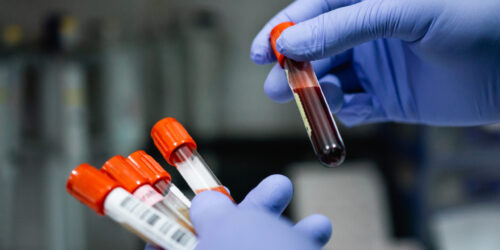Gene therapy has emerged as a promising approach for the treatment of hemophilia, a hereditary bleeding disorder caused by defects in the F8 or F9 gene. Traditional treatment methods for hemophilia involve frequent intravenous administration of factor concentrate, which can be burdensome, time-consuming, and can be quite expensive over time. Gene therapy offers the possibility of a one-time treatment that provides sustained factor expression, reducing the need for regular infusions and improving patients’ quality of life.

Recent research has focused on developing gene therapies that can provide long-term relief from hemophilia symptoms by introducing functional copies of the defective genes. This has the potential to revolutionize the delivery of care for patients with hemophilia. In June 2023, the U.S. Food and Drug Administration (FDA) approved Roctavian™ (Valoctocogene roxaparvovec), an adeno-associated virus (AAV) vector-based gene therapy, for the treatment of severe hemophilia A in adults. This approval is a significant milestone in the field of gene therapy for hemophilia, offering a new treatment option for patients. Clinical trials have shown promising results, with the average annualized bleed rate (ABR) decreasing from 5.4 to 2.6 during the 3-year follow-up period.1
The cost-effectiveness of gene therapy for hemophilia is a topic of ongoing research and discussion. One study compared the cost-effectiveness of gene therapy with standard prophylactic treatment using factor VIII replacement therapy for hemophilia A. Over a 10-year period, gene therapy cost $1 million and resulted in 8.33 quality-adjusted life years (QALYs), while prophylactic treatment cost $1.7 million and resulted in 6.62 QALYs.2
There are currently two gene-based therapies in phase 3 clinical trials competing to be the second therapy for hemophilia A alongside Roctavian™. Dirloctogene (Spark Therapeutics) and Giroctocogene (Pfizer and Sangamo Therapeutics) both use viral vectors (adeno-associated virus) to deliver the therapeutic gene once injected into the patient. These therapies are expected to receive FDA approval in 2025.3
Plan sponsors should assess the following key considerations:
- Plan Sponsors need to assess the financial impact on their self-funded medical and pharmacy benefits. This includes evaluating how such a high-cost treatment will affect overall claims and premiums.
- Plans should assess their current Stop Loss coverage and any lasering that may be in place. Many health plans offer cost management options that can be evaluated as an option.
- Gene and cellular therapies may lead to long-term savings by reducing the need for ongoing factor replacement therapies, which can be costly over a patient’s lifetime. Assess any cost-benefit analyses to determine the potential for reduced healthcare expenditures in the long run.

How can Marsh McLennan Agency Help?
Marsh McLennan Agency’s team is here to help you evaluate and manage your pharmacy program. We are a trusted partner who can identify real opportunities for savings and help you make sense of your program, control your spend, and deliver savings to your organization. Learn more about how our Pharmacy Practice can provide end-to-end plan support to fit your organization’s needs.
This article was originally featured in our Rx Newsletter. Sign up to receive our quarterly newsletter emails.
Sources:
- “Roctavian Clinical Study Results”, ROCTAVIAN, accessed September 24, 2024, https://www.roctavian.com/en-us/roctavian-results/.
- Machin N, et al., “Gene therapy in hemophilia A: a cost-effectiveness analysis,” Blood Advances, accessed September 24, 2024, https://ashpublications.org/bloodadvances/article/2/14/1792/16245/Gene-therapy-in-hemophilia-A-a-cost-effectiveness.
- “Drug and biologic pipeline update Q3 2024,” CarelonRx,” accessed September 24, 2024, https://www.carelonrx.com/content/dam/digital/carelon/crx-assets/documents/Q3_2024_Drug_and_Biologic_Pipeline_NL.pdf.





